Remember when toys came with a side of genuine peril? Back in the swinging sixties, before helicopter parenting and safety recalls were everyday occurrences, toy manufacturers seemed to operate under the philosophy that if it didn’t pose at least a mild threat to life and limb, it probably wasn’t worth making. We survived chemistry sets that could blow up the garage, lawn darts that turned backyards into battlefields, and dolls that could literally set us on fire – and somehow, we turned out just fine (mostly).
1. Lawn Darts (Jarts)
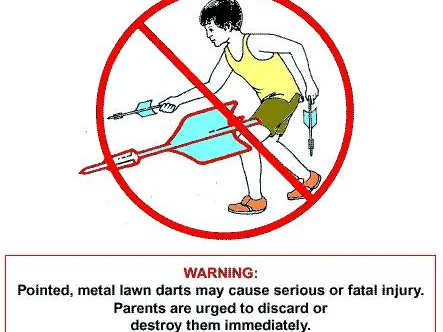
Nothing says “family fun” quite like hurling weighted metal spikes through the air at plastic rings while your siblings stood uncomfortably close to the target zone. These weren’t your garden-variety pool noodles – we’re talking about actual metal-tipped projectiles that could punch through a car roof if thrown with enough enthusiasm. The goal was simple: toss them underhand toward the target rings, but somehow they always seemed to find their way toward unsuspecting pets, neighbors, or that one cousin who never quite grasped the concept of “safe distance.”
The Consumer Product Safety Commission eventually banned these backyard missiles in 1988, but not before they’d claimed their place in emergency room folklore. Parents back then figured that a few stitches built character, and honestly, the thrill of narrowly avoiding impalement probably did teach us some valuable lessons about physics and mortality. Those summer evenings spent dodging flying metal while trying to score points created memories that no modern foam dart set could ever replicate.
2. Chemistry Sets with Real Chemicals
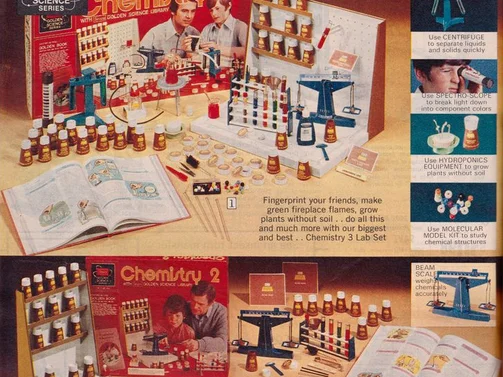
Gilbert Chemistry Sets didn’t mess around with safe, watered-down compounds – they came packed with honest-to-goodness chemicals that could burn, explode, or create toxic fumes that would make a hazmat team nervous. These weren’t pretend science kits; they contained real sulfuric acid, potassium permanganate, and other substances that today would require a permit just to purchase. Kids could whip up everything from stink bombs to small explosives, all while learning valuable lessons about the periodic table and emergency room procedures.
The instruction manuals read like a bomb-making guide crossed with a chemistry textbook, complete with experiments that produced genuine fire, smoke, and occasionally, singed eyebrows. Parents trusted that their budding scientists would exercise caution, though most of us learned through trial and error – emphasis on the error part. Sure, we might have accidentally created mustard gas in the basement or set the workbench on fire, but we also developed a healthy respect for science and the importance of proper ventilation.
3. Creepy Crawlers Thingmaker
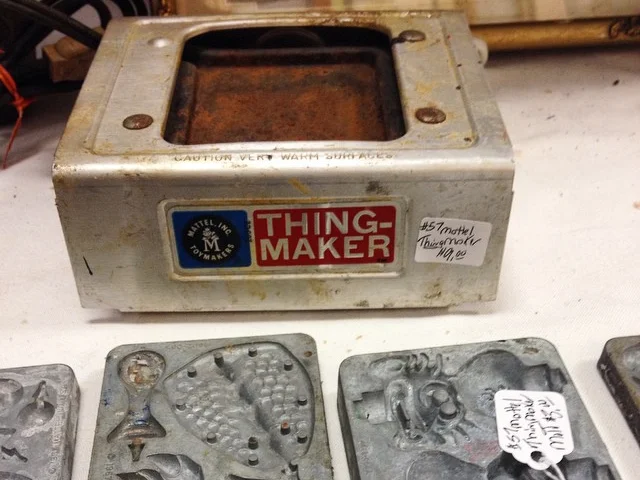
The Thingmaker promised to turn every kid into a master of miniature monster creation, using a metal heating plate that reached temperatures hot enough to melt the special “Plasti-Goop” – and apparently, human skin if you weren’t careful. This wasn’t some lukewarm easy-bake situation; we’re talking about surface temperatures that rivaled a stovetop burner. The metal molds got so hot that touching them bare-handed would leave you with burns that lasted for weeks, but somehow that just added to the authentic mad scientist experience.
Loading the liquid plastic into tiny molds while avoiding third-degree burns became a rite of passage that taught patience, precision, and the importance of having a good relationship with your local pharmacist. The fumes from the heating plastic probably weren’t doing our developing lungs any favors either, but the satisfaction of peeling a perfectly formed rubber spider from a scorching metal mold made it all worthwhile. Those little monsters we created might have been toxic and the process might have been hazardous, but they were our toxic, hazardous creations, and we wore our battle scars with pride.
4. Metal Tonka Trucks
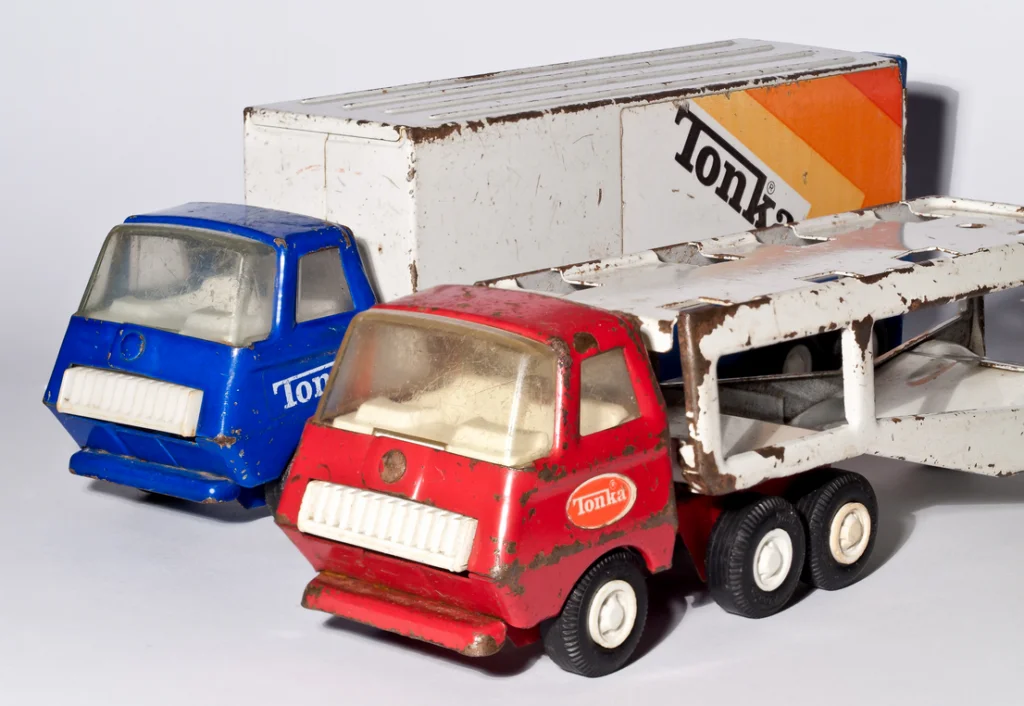
Before plastic took over the toy industry, Tonka trucks were built like miniature tanks from solid steel that could double as medieval weapons in a pinch. These weren’t lightweight playthings – they were hefty chunks of metal with sharp edges that could leave dents in walls, floors, and occasionally, skulls. A well-thrown Tonka dump truck could take out a window, knock over a lamp, or create a crater in the drywall that would require explaining to parents who were already questioning their life choices.
The beauty of these indestructible behemoths was that they lasted forever, mainly because they were too dangerous to actually play with safely. Stepping on one barefoot in the dark was like encountering a land mine, and getting hit by one during a particularly enthusiastic play session could leave bruises that lasted for weeks. But they taught us about durability, physics, and the importance of wearing shoes indoors, lessons that served us well into adulthood when we discovered that real construction equipment was surprisingly similar to our childhood toys.
5. Gilbert Erector Sets with Sharp Metal Parts
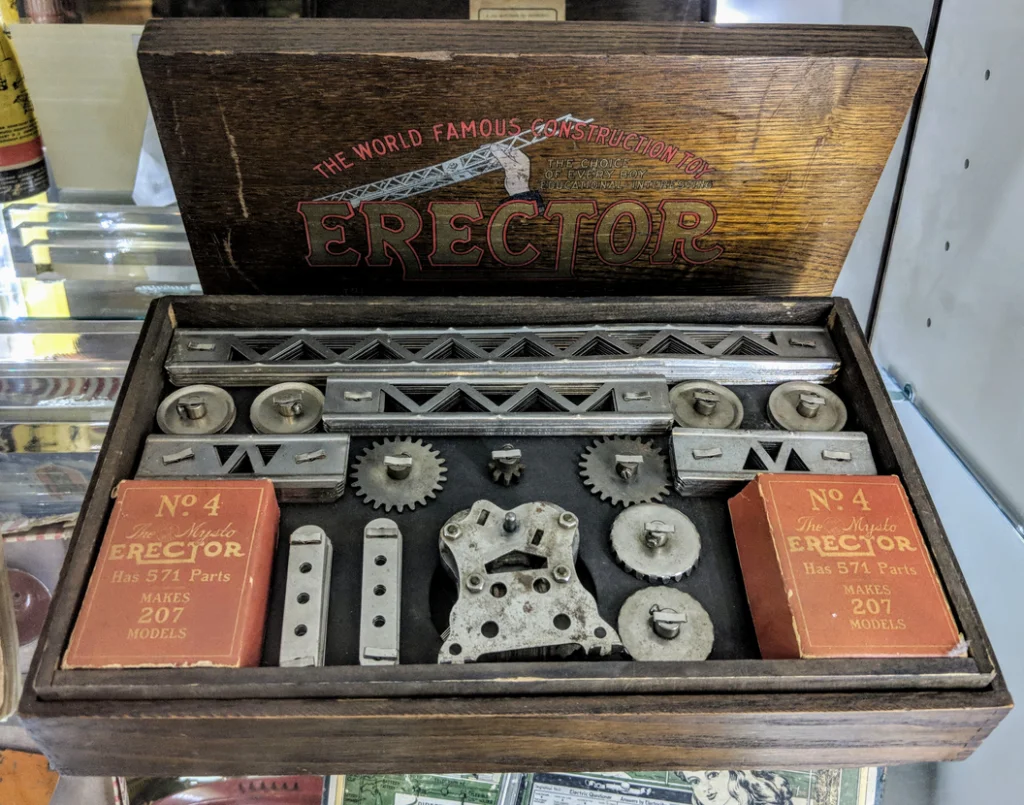
Long before safety engineers invented rounded corners and plastic components, Erector Sets came with genuine steel girders, sharp metal screws, and enough small parts to create a choking hazard buffet. These weren’t toys as much as they were introductory engineering courses that happened to come with a high probability of tetanus. The metal pieces had edges sharp enough to slice through skin, and the tiny screws seemed designed to disappear into carpet fibers where they’d lie in wait for unsuspecting bare feet.
Building elaborate structures meant wrestling with stubborn metal pieces that fought back, often drawing blood in the process. The instruction manuals showed impressive towers and bridges, but they failed to mention that constructing them would leave your fingers looking like you’d been wrestling with a particularly ornery cat. Still, there was something deeply satisfying about creating a wobbly metal tower that could theoretically support weight, even if the construction process left you looking like you’d lost a fight with a hardware store.
6. BB Guns and Pellet Rifles

“You’ll shoot your eye out” became the rallying cry of concerned parents everywhere, but that didn’t stop Red Ryder BB guns from being the ultimate Christmas gift for adventurous kids. These weren’t toys in the traditional sense – they were actual firearms that happened to be marketed to children, complete with enough power to put out windows, dent cars, and yes, potentially cause serious eye injuries. The thin line between “toy” and “weapon” got pretty blurry when you were pumping up a pellet rifle and taking aim at tin cans in the backyard.
Most of us learned gun safety through a combination of stern parental warnings and painful trial and error, usually involving ricochets that taught us about angles and the importance of choosing targets carefully. The neighborhood cats learned to give us a wide berth, and more than one garage window bore the scars of our marksmanship practice. These mini firearms taught responsibility, respect for dangerous objects, and the valuable lesson that what goes up must come down – sometimes in your neighbor’s yard.
7. Super Elastic Bubble Plastic
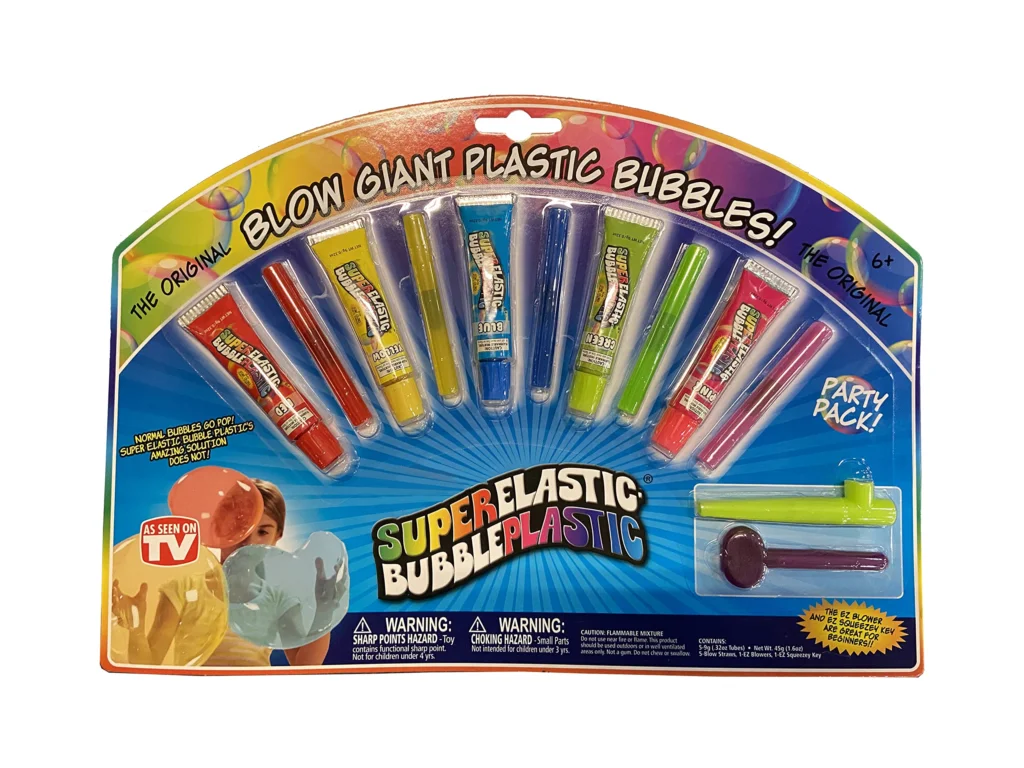
This magical substance promised to create bubbles that wouldn’t pop, and it delivered – along with a distinctive chemical smell that probably knocked a few points off our collective IQ. The plastic came in small tubes and had to be squeezed onto the end of a plastic straw, where it would form a malleable blob that could be blown into surprisingly durable bubbles. The catch was that this miracle material was basically liquid plastic that released toxic fumes and stuck to everything it touched with the tenacity of industrial adhesive.
Getting Super Elastic Bubble Plastic stuck in your hair meant either a creative haircut or a trip to the emergency room, depending on how ambitious your bubble-making session had been. The fumes from blowing these bubbles probably weren’t doing our brain cells any favors, but the satisfaction of creating a bubble that could survive being bounced around the room was worth the temporary light-headedness. Parents eventually caught on to the fact that their kids were essentially huffing plastic fumes for entertainment, but not before we’d all experienced the unique joy of creating virtually indestructible bubbles.
8. Slip ‘N Slide on Concrete
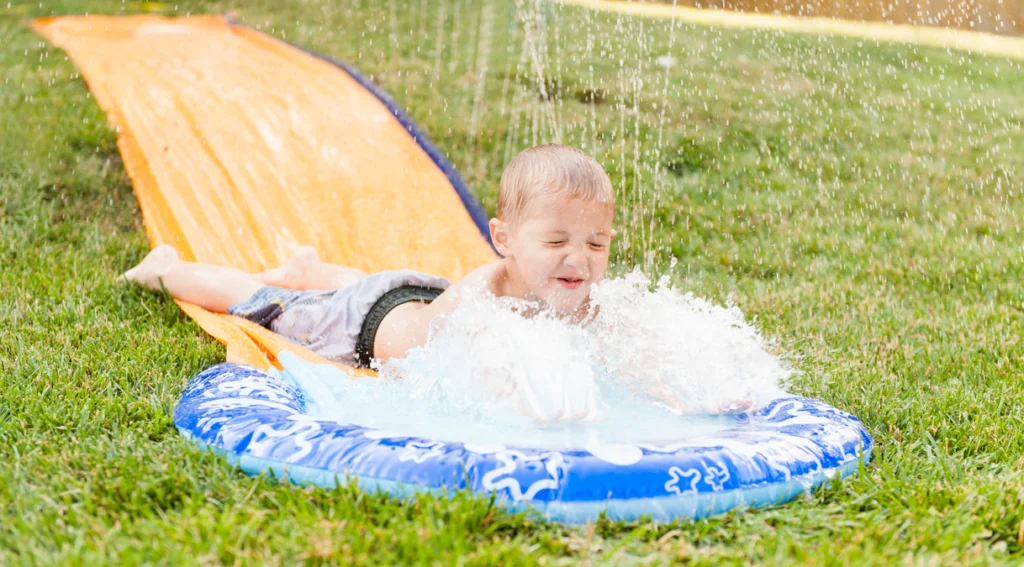
The original Slip ‘N Slide was designed for grass, but somehow every neighborhood had that one kid whose parents had installed it on their concrete driveway or patio, turning a simple water toy into an extreme sport. What should have been a gentle glide across wet plastic became a high-speed encounter with unforgiving pavement that left participants looking like they’d gone ten rounds with a cheese grater. The combination of water, plastic, and concrete created the perfect conditions for spectacular wipeouts that would make modern stunt coordinators nervous.
The key to surviving a concrete Slip ‘N Slide was building up enough speed to clear the entire length in one go, because slowing down meant skin-to-concrete contact that would leave lasting reminders of your aquatic adventure. Most of us learned the hard way that physics doesn’t care about your summer fun plans, and that friction burns heal slowly but leave impressive scars. Still, there was something undeniably thrilling about hurtling across wet plastic at dangerous speeds, even if the landing was less than graceful.
9. Clacker Balls
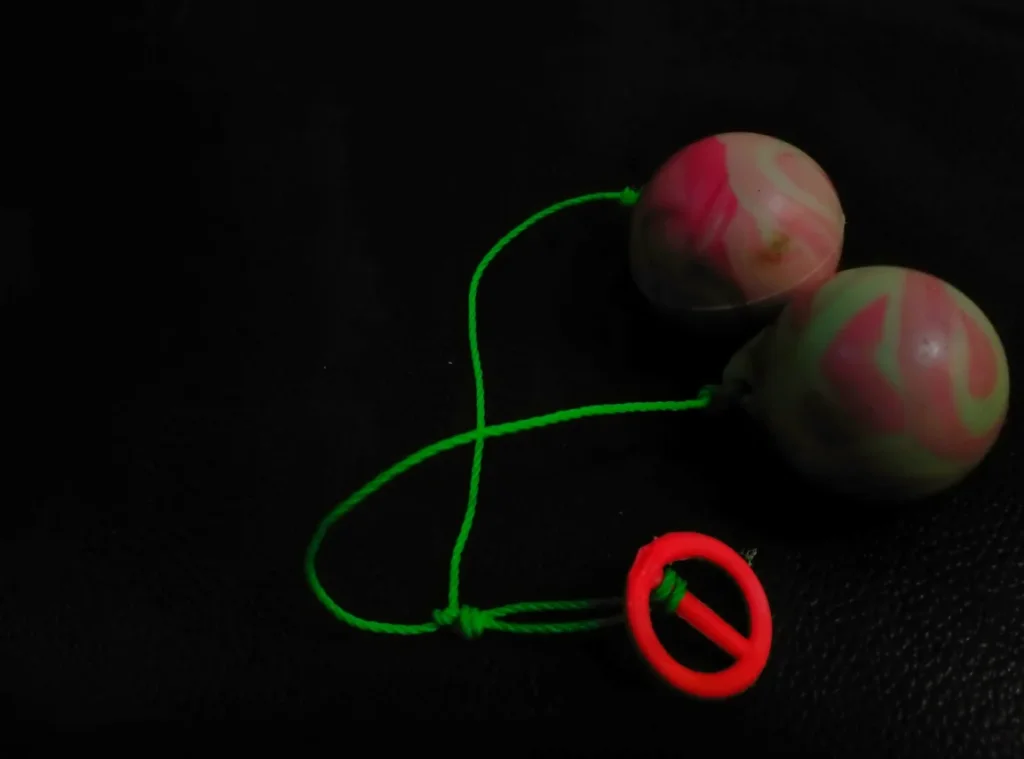
These seemingly innocent toys consisted of two heavy acrylic balls connected by string that would bang together when swung back and forth, creating a satisfying clacking sound and occasionally, flying shrapnel. The goal was to get them clacking above and below your hand in a rhythmic pattern, but the reality was that these dense balls of plastic had a tendency to explode without warning, sending sharp fragments in all directions. They were like tiny wrecking balls attached to string, and somehow we thought it was a good idea to swing them around near our faces.
When the balls inevitably shattered from repeated impacts, they created jagged pieces of plastic that could cut like glass and had a particular talent for finding their way into eyes, mouths, and bare feet. The satisfying “clack-clack-clack” sound was music to our ears, right up until it was replaced by the sound of breaking plastic and someone crying. These toys taught us about momentum, impact forces, and the importance of having good reflexes, lessons that came with a side of potential plastic surgery.
10. Hot Wheels Track Launcher
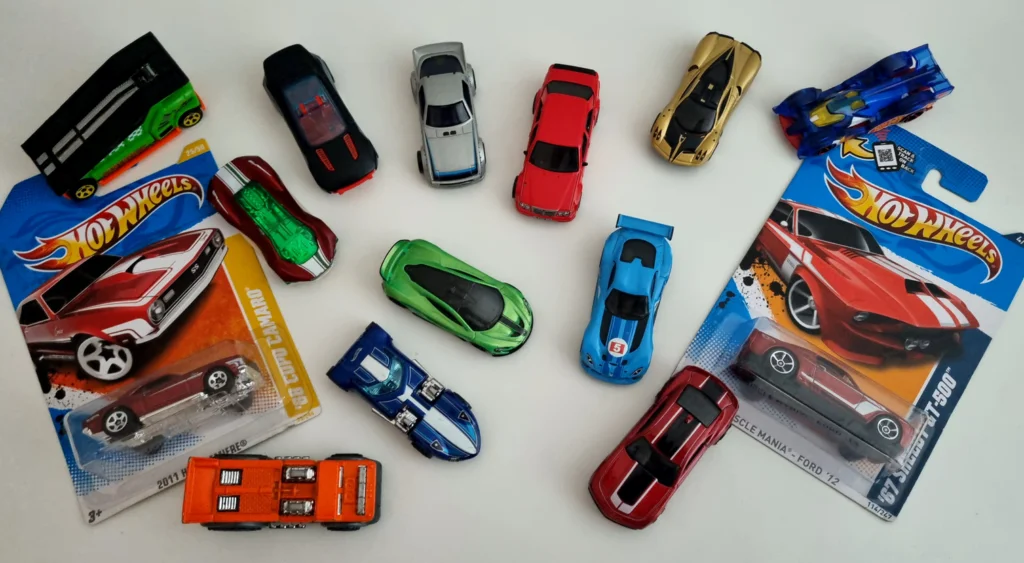
Hot Wheels cars were harmless enough on their own, but add a track launcher that could propel those little metal vehicles at eye-level speeds, and suddenly you had a precision missile system disguised as a toy. These weren’t gentle ramps; they were spring-loaded catapults that could launch a Hot Wheels car with enough force to leave welts, break windows, or take out a lamp from across the room. The orange track pieces could be assembled into elaborate courses that turned bedrooms into high-speed racetracks with no regard for safety zones.
The thrill of launching a car at maximum velocity was intoxicating, even if it meant dodging flying metal projectiles when things went wrong. Setting up jumps and loops created opportunities for cars to go airborne in unexpected directions, and more than one parent learned the hard way that a Hot Wheels car traveling at launcher speed could leave a lasting impression – literally. These toys taught us about velocity, trajectory, and the importance of establishing clear firing lanes before pulling the trigger.
11. Swing Wing Flying Discs
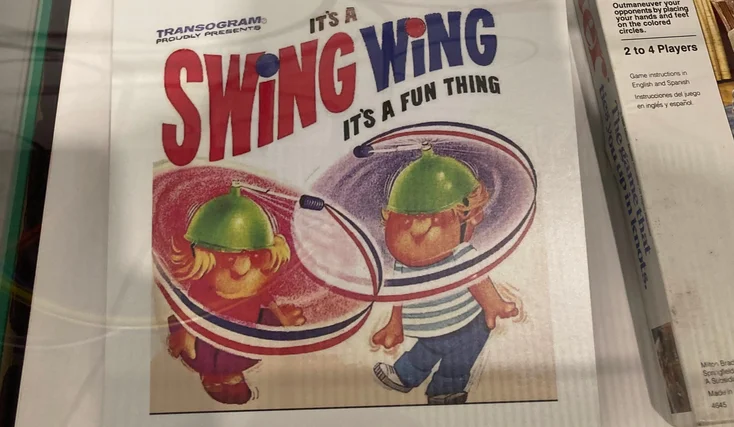
Before safety regulations tamed the skies, Swing Wing flying discs were made from rigid plastic with sharp edges that could slice through air and apparently, skin with equal ease. These weren’t the soft, flexible frisbees we know today; they were hard plastic projectiles that flew with the precision of guided missiles and the stopping power of medieval weapons. Catching one required careful timing and thick gloves, because a mis-catch could result in fingers that looked like they’d been put through a paper shredder.
The aerodynamic design that made them fly so well also made them incredibly dangerous when they inevitably went off course and headed for unsuspecting bystanders or property. A well-thrown Swing Wing could travel impressive distances at head-chopping heights, turning any open area into a potential danger zone. We learned about aerodynamics, wind patterns, and the importance of yelling “heads up” really, really loudly.
12. Easy-Bake Oven (Original Version)
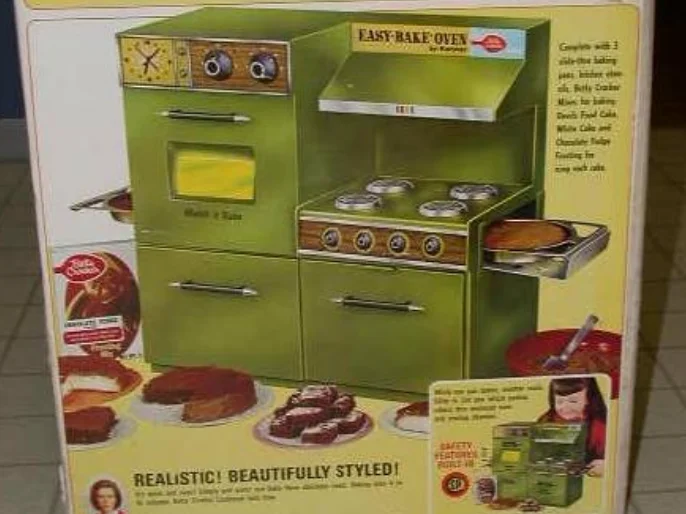
The original Easy-Bake Oven wasn’t powered by a harmless light bulb – it was heated by a 100-watt incandescent bulb that generated enough heat to actually cook food and occasionally, small fingers that got too close to the heating element. This wasn’t pretend cooking; it was real baking that happened at real temperatures inside a metal box that could brand you if you weren’t careful. The oven got hot enough to leave burns that would last for weeks, but somehow that just made the tiny cakes and cookies taste even better.
Operating this miniature inferno required the patience of a saint and the reflexes of a cat, because the heating element didn’t discriminate between cake batter and curious fingers. The metal surfaces stayed scorching hot long after the light went out, turning clean-up into a game of “don’t touch the lava.” But there was genuine pride in creating actual edible food in what was essentially a controlled fire hazard, and the lessons learned about heat, timing, and kitchen safety served us well in later life.
13. Barrel of Monkeys (Metal Version)
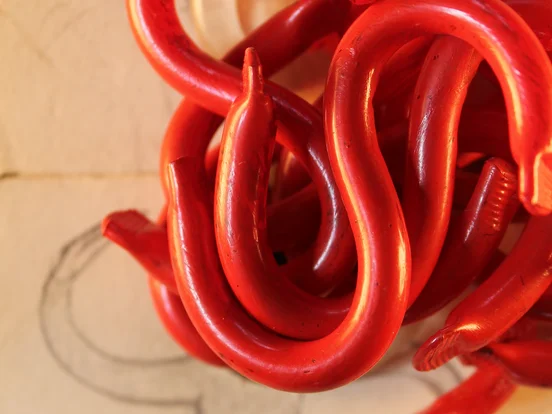
The original Barrel of Monkeys weren’t made from soft plastic – they were stamped from thin metal with sharp edges and tiny hooks that could draw blood if handled carelessly. These miniature metal primates had arms that ended in sharp points designed to link together, but they also had a talent for finding their way under fingernails and into soft skin. Creating long chains of monkeys required a delicate touch and the acceptance that minor lacerations were just part of the experience.
The satisfaction of creating an elaborate monkey chain was tempered by the knowledge that one wrong move could result in a handful of sharp metal pieces and wounded digits. The tiny hooks were perfect for linking monkeys together, but they were also ideal for catching on clothing, hair, and exposed skin with painful results. This simple game taught patience, fine motor skills, and the valuable lesson that even the most innocent-looking toys could pack a surprising punch.
Those were the days when toys built character along with scraped knees and singed eyebrows. We learned to respect dangerous objects, developed quick reflexes, and gained a healthy appreciation for emergency room staff who knew us by name. Sure, modern toys are safer, but they’re also missing that special something that came with genuine peril – the knowledge that playtime was an adventure that might just leave a mark. We survived the toy box of the sixties, and somehow, those battle scars and close calls made us who we are today.
This story 13 Toys from the ’60s That Were More Dangerous Than Fun (But We Loved Them Anyway) was first published on Takes Me Back.


